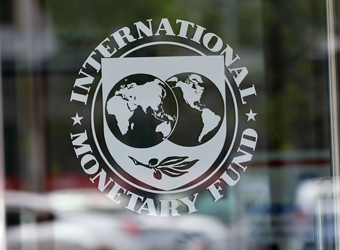The International Monetary Fund (IMF) has cut on Tuesday its growth outlook for Saudi Arabia on lower oil production, underscoring the challenges haunting the kingdom as it seeks to overhaul its economy.
Gross domestic product will expand 0.4 percent in 2017, the lender said in its World Economic Outlook report update on Monday, citing the impact of the recent deal by the Organization of the Petroleum Exporting Countries to reduce output. It compares with the fund’s October prediction of 2 percent, and a median estimate of 0.9 percent in a Bloomberg survey.
The forecast reflects cuts in government spending as well as the impact of lower oil production, Gian Maria Milesi-Ferretti, deputy director of the IMF’s research department, told reporters on Monday. “There is a big adjustment in spending downwards,” he said. “There is an adjustment in taxes upwards, and as a result non-oil growth is not going to be as good as it was during periods of strong oil prices.”
Saudi Arabia is seeking to build investor confidence in its long-term strategy to reduce dependence on crude and boost non-oil sectors of its economy, while trying to plug one of the Middle East’s biggest budget deficits. The kingdom is planning to borrow as much as $15 billion this year on international debt markets to help fund its spending plans, following last year’s $17.5 billion sovereign bond sale.
“It will take time to diversify the economy in a meaningful way,” said Monica Malik, chief economist at Abu Dhabi Commercial Bank. “Saudi remains dependent on oil; and at the current prices, the ability of the government to stimulate growth is limited.”
Saudi Arabia’s so-called Vision 2030 strategy derives from the global slump in oil prices since 2014, which severely dented revenue. Led by Deputy Crown Prince Mohammed bin Salman, it includes a plan to set up the world’s biggest sovereign wealth fund and to sell a stake of less than 5 percent in state-run Saudi Arabian Oil Co. by 2018.
Saudi Arabia estimates growth fell to 1.4 percent in 2016, the lowest since the recession in 2009, as it cut spending by suspending bonuses for public employees and reducing ministers’ salaries. The government has also raised the cost of fuel, and plans to introduce value-added taxes and fees on expatriate workers.
In Demand
October’s sovereign bond was the biggest ever emerging-market issuance, attracting $67 billion of bids, people familiar with the sale told Bloomberg at the time. Saudi Arabia is “very likely” to tap debt markets again in the first quarter, including with an Islamic bond, Finance Minister Mohammed Al-Jadaan said last month.
The government plans to increase debt levels to 30 percent of economic output by 2020, from 7.7 percent, according to targets set out in June. By which time, it may be running a surplus, based on its latest budget in December — the most-detailed in Saudi history.
Malik said she expects Saudi debt to remain attractive in international markets even with the negative impact of weaker growth, bolstered by the riyal-dollar peg, low government borrowing and a stronger oil-price outlook for 2017.
The IMF forecast Saudi growth to rebound to 2.3 percent in 2018 — still lower than its October projection of 2.6 percent.
“The scale of the adjustment Saudi Arabia must still deliver suggests growth will lag,” Simon Williams, HSBC Holdings Plc’s chief economist for central and eastern Europe, the Middle East and North Africa, said in a report issued on Monday. “It is here, though, where the prospects for reform are at their strongest.”
Source: Bloomberg


